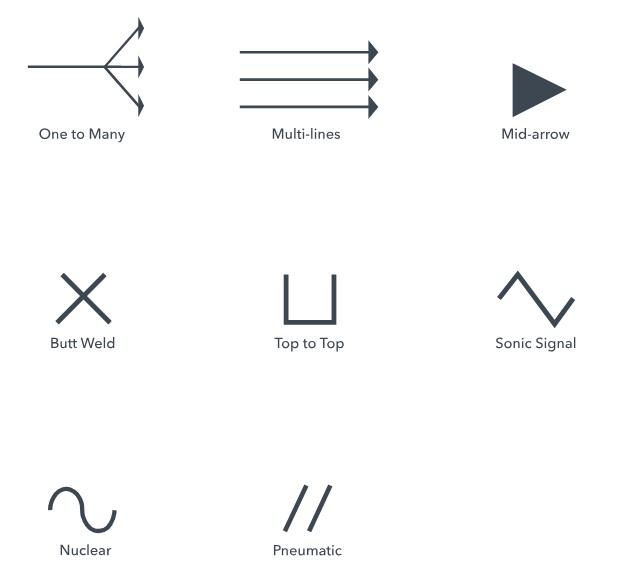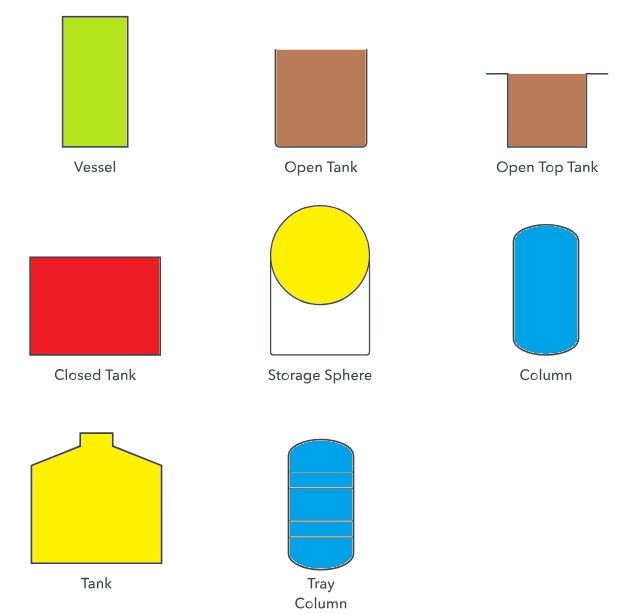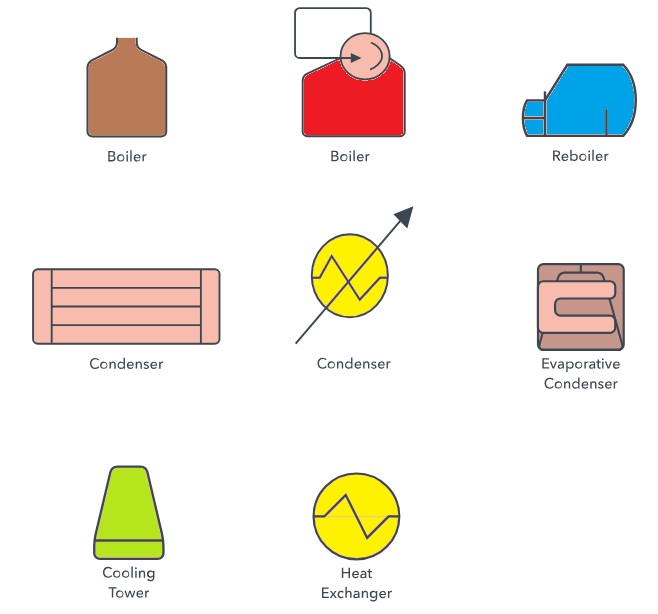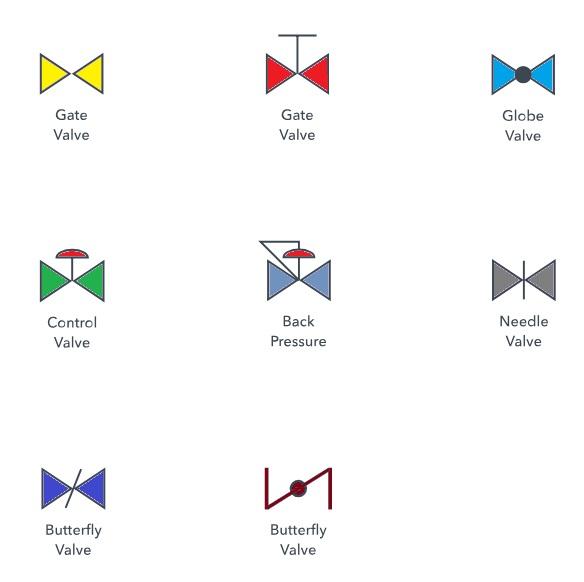One area of P&IDs that is standardized are the instrumentation symbols, the key to being able to understand P&IDs. Instrumentation symbols appearing on diagrams adhere to ANSI/ISA’s S5.1-1984 (R 1992) standards. Sticking to the Instrumentation, Systems, and Automation Society (ISA) S5.1 Instrumentation Symbols and Identification standard ensures a consistent, system independent means of communicating instrumentation, control, and automation intent so everyone understands.
ISA S5.1 defines four graphical elements—discrete instruments, shared control/display, computer function, and programmable logic controller—and groups them into three location categories (primary location, auxiliary location, and field mounted).
- Discrete instruments are signified by circular elements. Shared control/display elements are circles surrounded by a square. Computer functions are indicted by a hexagon, and programmable logic controller (PLC) functions are shown as a triangle inside a square.
- A single horizontal bar across any of the four graphical elements means the function resides in the primary location category. A double line indicates an auxiliary location, and no line places the device or function in the field. Devices located behind a panel-board in some other inaccessible location are shown with a dashed horizontal line
- Letter and number combinations appear inside each graphical element and letter combinations are defined by the ISA standard. Numbers are user assigned and schemes vary with some companies use of sequential numbering. Some tie the instrument number to the process line number. Others may choose to adopt unique and sometimes unusual numbering systems.
- The first letter defines the measured or initiating variables. Examples inlcude Analysis (A), Flow (F), Temperature (T), etc. with succeeding letters defining readout, passive, or output functions such as Indicator (I), Record (R), Transmit (T), and so forth.
Here are some examples of P&ID symbols. You can review a full overview of all P&ID symbols included in Lucidchart if needed.
Equipment
Equipment is comprised of miscellaneous P&ID units that don’t fit into the other categories. This group includes hardware like compressors, conveyors, motors, turbines, vacuums, and other mechanical devices.

Piping
A pipe is a tube that transports fluid substances. Piping can be made of various materials, including metal and plastic. The piping group is made up of one-to-many pipes, multi-line pipes, separators, and other types of piping devices.

Vessels
A vessel is a container that is used to store fluid. It may also alter the characteristics of the fluid during storage. The vessels category includes tanks, cylinders, columns, bags, and other vessels.

Heat exchangers
A heat exchanger is a device that’s designed to efficiently transfer heat from different areas or mediums. This category includes boilers, condensers, and other heat exchangers.

Pumps
A pump is a device that uses suction or pressure to raise, compress, or move fluids in and out of other objects. This section is comprised of both pumps and fans.

Instruments
An instrument is a device that measures—and sometimes controls—quantities such as flow, temperature, angle, or pressure. The instruments group houses indicators, transmitters, recordings, controllers, and elements.

Valves
A valve regulates, directs, or controls the flow of a fluid by opening, closing, or partially obstructing passageways in a piping system. This category includes rotameters, orifices, and other types of valves.

